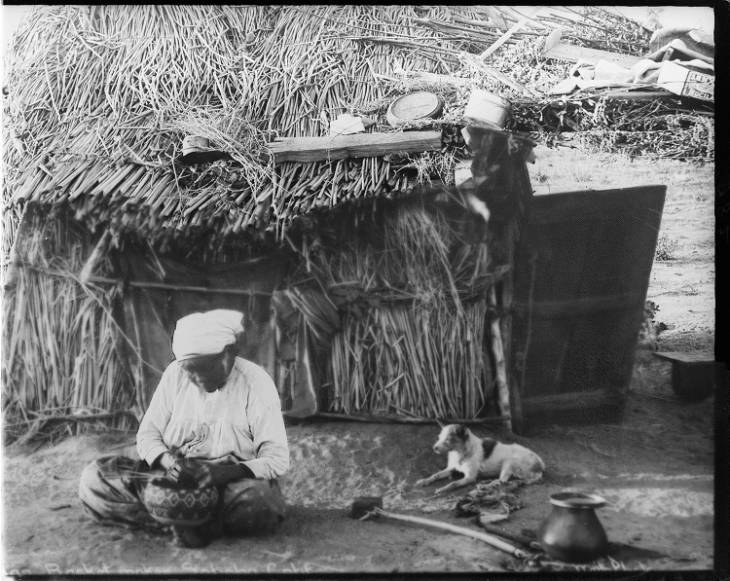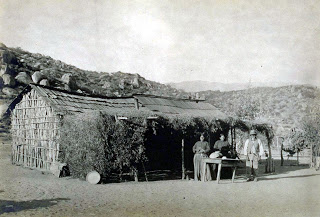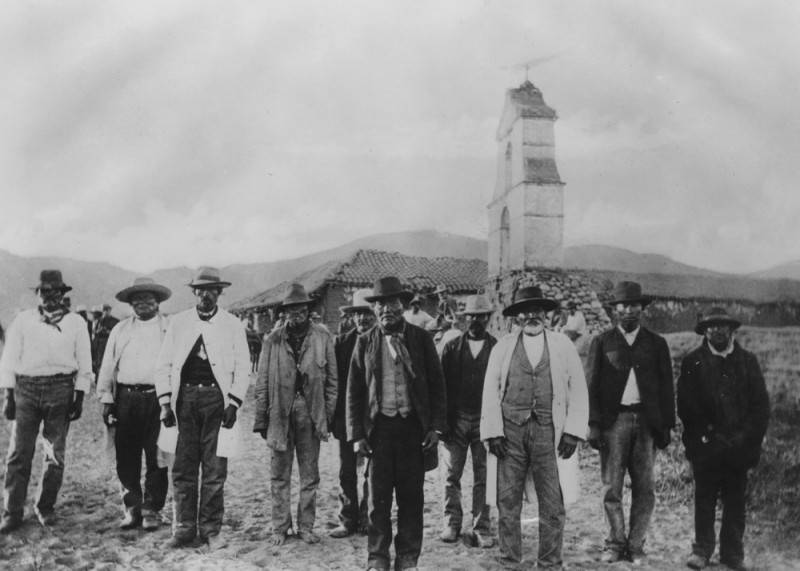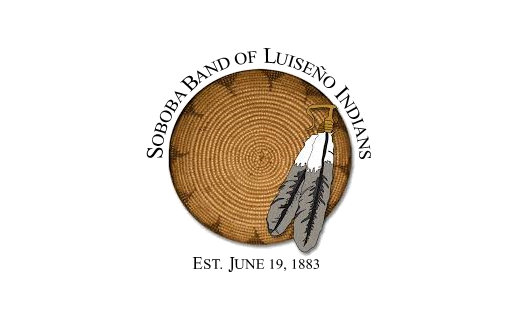Luise%C3%B1o on:
[Wikipedia]
[Google]
[Amazon]
The Luiseño or Payómkawichum are an indigenous people of California who, at the time of the first contacts with the Spanish in the 16th century, inhabited the coastal area of southern California, ranging from the present-day southern part of

Los Angeles County
Los Angeles County, officially the County of Los Angeles, and sometimes abbreviated as L.A. County, is the List of the most populous counties in the United States, most populous county in the United States and in the U.S. state of California, ...
to the northern part of San Diego County
San Diego County (), officially the County of San Diego, is a county in the southwestern corner of the U.S. state of California. As of the 2020 census, the population was 3,298,634, making it California's second-most populous county and the f ...
, and inland . In the Luiseño language
The Luiseño language is a Uto-Aztecan language of California spoken by the Luiseño, a Native American people who at the time of first contact with the Spanish in the 16th century inhabited the coastal area of southern California, ranging fr ...
, the people call themselves ''Payómkawichum'' (also spelled ''Payómkowishum''), meaning "People of the West." After the establishment of Mission San Luis Rey de Francia (The Mission of Saint Louis King of France), "the Payómkawichum began to be called San Luiseños, and later, just Luiseños by Spanish missionaries due to their proximity to this San Luis Rey mission.
Today there are six federally recognized tribes of Luiseño bands based in southern California, all with reservations. Another organized band is not federally recognized.
History

Pre-colonization
The Payómkawichum were successful in utilizing a number of natural resources to provide food and clothing. They had a close relationship with their natural environment. They used many of the native plants, harvesting many kinds of seeds, berries, nuts, fruits, and vegetables for a varied and nutritious diet. The land also was inhabited by many different species of animals which the men hunted for game and skins. Hunters took antelopes, bobcats, deer, elk, foxes, mice, mountain lions, rabbits, wood rats, river otters, ground squirrels, and a wide variety of insects. The Luiseño used toxins leached from the California buckeye to stupefy fish in order to harvest them in mountain creeks. Estimates for the pre-contact populations of most native groups in California have varied substantially. In the 1920s,A. L. Kroeber
Alfred Louis Kroeber (June 11, 1876 – October 5, 1960) was an American cultural anthropologist. He received his PhD under Franz Boas at Columbia University in 1901, the first doctorate in anthropology awarded by Columbia. He was also the firs ...
put the 1770 population of the Luiseño (including the Juaneño) at 4,000–5,000; he estimated the population in 1910 as 500. The historian Raymond C. White proposed a historic population of 10,000 in his work of the 1960s. Pablo Tac, born in 1820, recorded, "perhaps from oral history and official records" that approximately five thousand people were living in Payómkawichum territory prior to the arrival of the Spanish.
Mission period
The first Spanish missions were established in California in 1769. For nearly 30 years, Payómkawichum "who lived in the autonomous territories on the mesas and coastal valleys" in the western region of their traditional territory, "witnessed the constant incursion of caravans that moved north and south through their land on El Camino Real." Spanish missionaries established Mission San Luis Rey de Francia entirely within the borders of Payómkawichum territory in 1798. Known as the "King of the Missions," it was founded on June 13, 1798, by Father Fermín Francisco de Lasuén, located in what is nowOceanside, California
Oceanside is a city on the South Coast of California, located in San Diego County. The city had a population of 167,086 at the 2010 census. The city is a popular tourist destination, owing to its historic landmarks, beaches, and architecture.
...
, in northern San Diego County
San Diego County (), officially the County of San Diego, is a county in the southwestern corner of the U.S. state of California. As of the 2020 census, the population was 3,298,634, making it California's second-most populous county and the f ...
. It was the Spanish First Military District.
Mexican period
TheMexican Empire Mexican Empire may refer to:
* First Mexican Empire, the regime under Agustín de Iturbide (Agustín I) from 1821 to 1823
* Second Mexican Empire
The Second Mexican Empire (), officially the Mexican Empire (), was a constitutional monarchy est ...
assumed ownership of Payómkawichum lands after defeating Spain in the Mexican War of Independence
The Mexican War of Independence ( es, Guerra de Independencia de México, links=no, 16 September 1810 – 27 September 1821) was an armed conflict and political process resulting in Mexico's independence from Spain. It was not a single, co ...
in 1821. The following year, Mexican troops confiscated all coastal lands from the Payómkawichum in 1822, granting much of the land to Mexican settlers, who became known as Californios
Californio (plural Californios) is a term used to designate a Hispanic Californian, especially those descended from Spanish and Mexican settlers of the 17th through 19th centuries. California's Spanish-speaking community has resided there sinc ...
, to develop the land for agriculture.
Mexican-American War
The Payómkawichum did not actively participate in the war, but fell victim to the violence following theBattle of San Pasqual
The Battle of San Pasqual, also spelled San Pascual, was a military encounter that occurred during the Mexican–American War in what is now the San Pasqual Valley community of the city of San Diego, California. The series of military skirmishes ...
. Eleven Californio
Californio (plural Californios) is a term used to designate a Hispanic Californian, especially those descended from Spanish and Mexican settlers of the 17th through 19th centuries. California's Spanish-speaking community has resided there sin ...
lancers from the battle arrived at Rancho Pauma and stole horses from the Pauma Band of the Luiseno. The Pauma Band apprehended the thieves and sought to punish them and initially let them off with a warning. However, an American present at the trial successfully convinced the Luiseno to execute them, leading to the execution of all Californio thieves known to the Californios as the Pauma Massacre.
News of the execution reached the Mexican General José María Flores
General José María Flores was a Captain in the Mexican Army and was a member of ''la otra banda''. He was appointed Governor and ''Comandante General'' ''pro tem'' of Alta California from November 1846 to January 1847, and defended California ...
in Los Ángeles, he sent a Mexican force under José del Carmen Lugo in retaliation to execute the chiefs responsible for executing the Californios. Along the way Lugo met with a group of Cahuilla
The Cahuilla , also known as ʔívil̃uqaletem or Ivilyuqaletem, are a Native American people of the various tribes of the Cahuilla Nation, living in the inland areas of southern California.Cooswootna (Juan Antonio), who decided to join forces to attack their Payómkawichum rival. News of the advance reached Temecula, leading the Payómkawichum to hide in the nearby caves and canyons. The allied forces took the high ground on the meadows and the Payómkawichum troops charged up the hill to meet them, leading to the Temecula massacre. The battle killed over 100 Temecula Payómkawichum and the Payómkawichum were defeated. The captured soldiers were handed over to the Cahuilla, who executed all of the prisoners. The
 In 1875, President
In 1875, President 

 Today Luiseño people are enrolled in the following recognized tribes and one unrecognized tribe:
Today Luiseño people are enrolled in the following recognized tribes and one unrecognized tribe:
Volume 2
Soboba Band of Luiseño Indians official site
Pechanga Band of Luiseño Indians
San Luis Rey Band of Luiseño Indians official site
* {{DEFAULTSORT:Luiseno California Mission Indians Native American tribes in California Native American tribes in Riverside County, California Native American tribes in San Diego County, California History of San Diego County, California
Mormon Battalion
The Mormon Battalion was the only religious unit in United States military history in federal service, recruited solely from one religious body and having a religious title as the unit designation. The volunteers served from July 1846 to July ...
later reached Temecula and allowed the survivors to bury their dead.
American period
After the war, Payómkawichum leaders entered negotiations to sign the Treaty of Temecula and Treaty of San Louis Rey to protect their lands, but the treaties remained unratified. After the admission of the State of California, the state allowed White Americans to impose indentured servitude onIndigenous Californian
The indigenous peoples of California (known as Native Californians) are the indigenous inhabitants who have lived or currently live in the geographic area within the current boundaries of California before and after the arrival of Europeans. ...
s under the Act for the Governance and Protection of Indians. In 1875, President
In 1875, President Ulysses S. Grant
Ulysses S. Grant (born Hiram Ulysses Grant ; April 27, 1822July 23, 1885) was an American military officer and politician who served as the 18th president of the United States from 1869 to 1877. As Commanding General, he led the Union A ...
allowed reservations to be established in the area. That same year, the state of California evicted the Payómkawichum in the Temecula Valley
The Temecula Valley is a graben rift valley in western Riverside County, California.
The Temecula Valley is one of the graben valleys making up the Elsinore Trough, created by the Elsinore Fault Zone. It lies between the Wildomar Fault on th ...
to be redistributed to American ranchers. In 1882, another round of reservations was permitted to be established under President Chester A. Arthur after the details of the Temecula eviction scheme were revealed.
Boarding school
A boarding school is a school where pupils live within premises while being given formal instruction. The word "boarding" is used in the sense of " room and board", i.e. lodging and meals. As they have existed for many centuries, and now exte ...
programs were established to assimilate the Payómkawichum into subservience and American culture, whose children were enrolled into the Sherman Indian School in Riverside. The Pauma, Pala Pala may refer to:
Places
Chad
*Pala, Chad, the capital of the region of Mayo-Kebbi Ouest
Estonia
*Pala, Kose Parish, village in Kose Parish, Harju County
*Pala, Kuusalu Parish, village in Kuusalu Parish, Harju County
* Pala, Järva County, vil ...
, and Rincon Bands sued for the right to enroll their children at local schools.
Gems were discovered around the Pala Reservation in the 1890s, extracting pink tourmaline
Tourmaline ( ) is a crystalline Silicate mineral, silicate mineral group in which boron is compounded with elements such as aluminium, iron, magnesium, sodium, lithium, or potassium. Tourmaline is a gemstone and can be found in a wide variety o ...
, pegmatite
A pegmatite is an igneous rock showing a very coarse texture, with large interlocking crystals usually greater in size than and sometimes greater than . Most pegmatites are composed of quartz, feldspar, and mica, having a similar silici ...
, and morganite beryl (the latter being the first discovery of the gem of its kind). Pink tourmaline quickly became the top export as Dowager Empress
Empress dowager (also dowager empress or empress mother) () is the English language translation of the title given to the mother or widow of a Chinese, Japanese, Korean, or Vietnamese emperor in the Chinese cultural sphere.
The title was al ...
Cixi
Empress Dowager Cixi ( ; mnc, Tsysi taiheo; formerly romanised as Empress Dowager T'zu-hsi; 29 November 1835 – 15 November 1908), of the Manchu Yehe Nara clan, was a Chinese noblewoman, concubine and later regent who effectively controlled ...
of the Qing dynasty
The Qing dynasty ( ), officially the Great Qing,, was a Manchu-led imperial dynasty of China and the last orthodox dynasty in Chinese history. It emerged from the Later Jin dynasty founded by the Jianzhou Jurchens, a Tungusic-speak ...
spoke highly of the gem in 1902, which became the tribe's main export until 1911 when the Dowager died.
The Payómkawichum were allowed to pursue gambling operations on their reservations after its legalization in the 1980s, which allowed them to establish several casinos in their reservations in the 2000s, including but not limited to the Pala Casino Resort and Spa (2000), Pechanga Resort & Casino (2002), and Harrah's Resort Southern California (2004). This newfound wealth also allowed the Pechanga Band to purchase the naming rights to the San Diego Sports Arena, now known as Pechanga Arena.
During the October 2007 California wildfires
The October 2007 California wildfires, also known as the Fall 2007 California firestorm, were a series of about thirty wildfires (17 of which became major wildfires) that began igniting across Southern California on October 20. At least 1,500 h ...
, the Poomacha Fire ravaged the La Jolla Indian Reservation, destroying 92% of the reservation. State and federal agencies provided aid to rebuild the tribe's facilities and residents of the tribe were able to return to the reservation by the end of the next year.
Language
The Luiseño language belongs to the Cupan group ofTakic languages
The Takic languages are a putative group of Uto-Aztecan languages historically spoken by a number of Indigenous peoples of Southern California. Takic is grouped with the Tubatulabal, Hopi, and Numic languages in the northern branch of the Uto-Az ...
, within the major Uto-Aztecan
Uto-Aztecan, Uto-Aztekan or (rarely in English) Uto-Nahuatl is a family of indigenous languages of the Americas, consisting of over thirty languages. Uto-Aztecan languages are found almost entirely in the Western United States and Mexico. The na ...
family of languages. About 30 to 40 people speak the language. In some of the independent bands, individuals are studying the language, language preservation materials are being compiled, and singers sing traditional songs in the language. Pablo Tac, born at San Luis Rey in 1822, devised a written form of Luiseño language through "his study of Latin grammar and Spanish" while working "among international scholars in Rome." Although Tac had to conform to "Latin grammatical constructions, his word choice and his narrative form, along with his continual translation between Luiseño and Spanish, establish an Indigenous framework for understanding Luiseño."
Bands
Villages
Riverside County
* 'áaway, on a head branch of Santa Margarita River * Awa’, Aguanga * Chawimai, Los Duraznos, Cahuilla valley * Hurúmpa, west of Riverside * Méexa, on Santa Margarita River northwest of Temecula * Pawi, warm spring in middle of village at Cahuilla valley * Páayaxchi, on Elsinore Lake * Pichaang, Pechanga * Șuvóowu Șuvóova, east of San Jacinto Soboba * Táa'akwi, at the head of Santa Margarita River * Teméeku, east of TemeculaSan Diego County
*'ahúuya, near the upper course of San Luis Rey River * 'akíipa, near Kahpa * 'áalapi, San Pascual south of the middle course of the San Luis Rey River * Húyyulkum, on the upper course of San Luis Rey River * 'ikáymay, near San Luis Rey Mission * Qáxpa, on the middle course of San Luis Rey River * Katúktu, between Santa Margarita and San Luis Rey Rivers, north of San Luis Rey * Qée'ish, Qéch, south of San Luis Rey Mission * Qewéw, on the upper course of San Luis Rey River * Kóolu, near the upper course of San Luis Rey River * Kúuki, on the upper course of San Luis Rey River * Kwáa'alam, on the lower course of San Luis Rey River * Maláamay, northeast of Pala * Mixéelum pompáwvo, near Escondido * Ngóoriva * Pa'áa'aw, near TáiPalomar mountain
Palomar Mountain ( ; es, Monte Palomar ) is a mountain ridge in the Peninsular Ranges in northern San Diego County. It is famous as the location of the Palomar Observatory and Hale Telescope, and known for the Palomar Mountain State Park.
His ...
* Páala, at Pala
* Páalimay, on the coast between Buena Vista and Agua Hedionda Creeks, Carlsbad
* Panakare, north of Escondido
* Páașuku, near the headwaters of San Luis Rey River
* Páawma, east of Pala Pauma
* Pochóorivo, on the upper course of San Luis Rey River
* Sóowmay, south of the middle course of San Luis Rey River
* Șakíshmay (Luiseño or Diegueño), on the boundary line between the two peoples
* Șíikapa, Palomar, west of Escondido
* Táaxanashpa, La Jolla
* Táakwish poșáppila, east of Palomar Mountain
* Tá'i, close to Palomar Mountain
* Tapá'may, north of Katúktu
* Tómqav, west of Pala
* 'úshmay, at Las Flores
* Waxáwmay, Guajome on San Luis Rey River above San Luis Rey
* Wiyóoya, at the mouth of San Luis Rey River
* Wi'áasamay, east of San Luis Rey
* Wáșxa, Rincon near the upper course of San Luis Rey River
* Yamí', near Húyyulkum
Notable Luiseños
* Pete Calac (1892–1968), football player * Freddy Herrera, musician *James Luna
James Luna (February 9, 1950March 4, 2018) was a Payómkawichum, Ipi, and Mexican-American performance artist, photographer and multimedia installation artist. His work is best known for challenging the ways in which conventional museum exhibi ...
(1950–2018), performance artist
* Jamie Okuma (b. 1977), beadwork artist, fashion designer
Fashion is a form of self-expression and autonomy at a particular period and place and in a specific context, of clothing, footwear, lifestyle, accessories, makeup, hairstyle, and body posture. The term implies a look defined by the fashio ...
* Fritz Scholder
Fritz William Scholder V (October 6, 1937 – February 10, 2005) was a Native American artist. Scholder was an enrolled member of the La Jolla Band of Luiseno Indians, a federally recognized tribe of Luiseños, a California Mission tribe. Scho ...
(1937–2005), painter and sculptor
* Ruth-Ann Thorn (b. 1965), art dealer, documentary film maker
* Pablo Tac (1822–1841), scholar
See also
*Luiseño language
The Luiseño language is a Uto-Aztecan language of California spoken by the Luiseño, a Native American people who at the time of first contact with the Spanish in the 16th century inhabited the coastal area of southern California, ranging fr ...
* Luiseño traditional narratives
* Mission Indians
Mission Indians are the indigenous peoples of California who lived in Southern California and were forcibly relocated from their traditional dwellings, villages, and homelands to live and work at 15 Franciscan missions in Southern California an ...
* Pauma Massacre
* Temecula Massacre
* USS ''Luiseno'' (ATF-156)
* Kumeyaay people
References
;Citations ;Works cited * * * * *Further reading
* Bean, Lowell John and Shipek, Florence C. (1978) "Luiseño," in ''California'', ed. Robert F. Heizer, vol. 8, ''Handbook of North American Indians'' (Washington, D.C.: Smithsonian Institution, pp. 550–563. * Du Bois, Constance Goddard. 1904–1906. "Mythology of the Mission Indians: The Mythology of the Luiseño and Diegueño Indians of Southern California", in ''The Journal of the American Folk-Lore Society'', Vol. XVII, No. LXVI. pp. 185–8 904 Vol. XIX. No. LXXII pp. 52–60 and LXXIII. pp. 145–64. 906 * *Volume 2
External links
Soboba Band of Luiseño Indians official site
Pechanga Band of Luiseño Indians
San Luis Rey Band of Luiseño Indians official site
* {{DEFAULTSORT:Luiseno California Mission Indians Native American tribes in California Native American tribes in Riverside County, California Native American tribes in San Diego County, California History of San Diego County, California